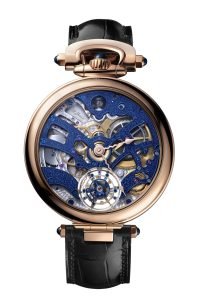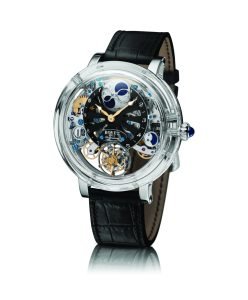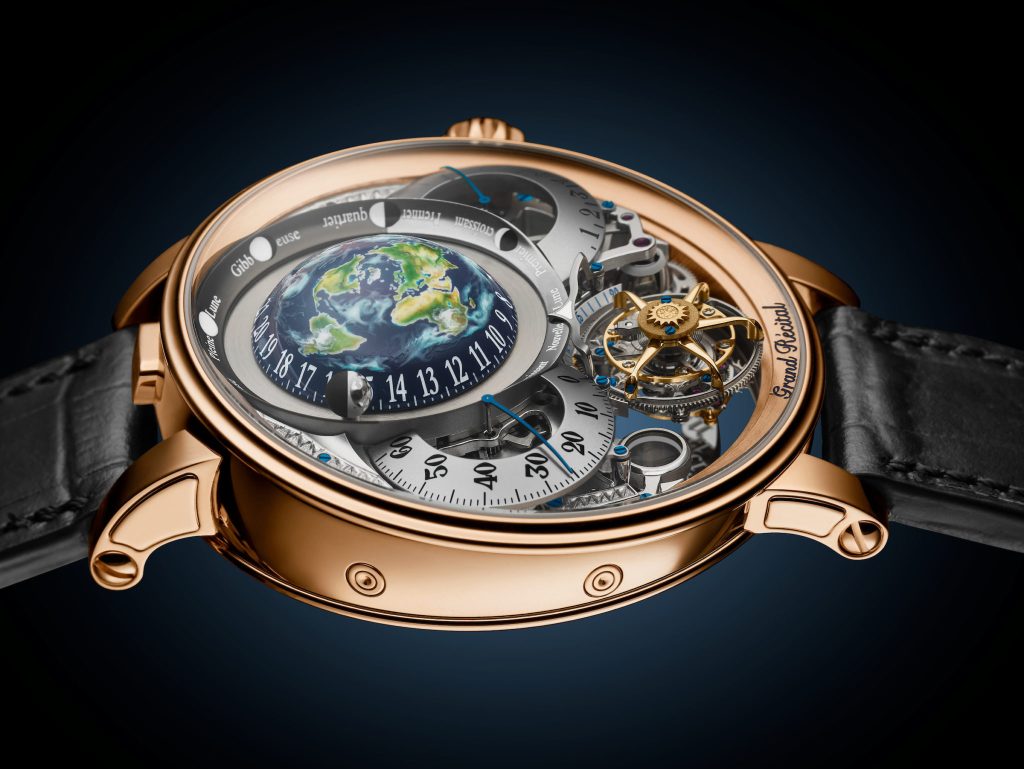You see it in the distance once you enter the Val-de-Travers in the canton of Neuchâtel. There, in the tree-covered hills behind a quaint Swiss village, sits the stunning Château de Môtiers. This early 14th-century mansion, resembling a vision from a fairy tale, was the home of the Bovet family of watchmakers from 1835 until the family donated the château to the canton in 1957.
Businessman and watch aficionado Pascal Raffy purchased Bovet in 2001. Five years later, Raffy bought back the Château de Môtiers, which the canton was finding costly to maintain. Ever since, it has housed the brand’s watchmaking and decorative arts workshops. Standing inside the clean high-tech room where the watchmakers and artisans work, with wide windows in the ancient walls offering great natural light and a view over the entire valley, one can’t help but think this is the way all watchmaking should be done.
Bovet’s History
The brand dates to 1822, when Alphonse, Edouard, Frédéric and Gustave Bovet, the sons of Swiss watchmaker Jean-Frédéric Bovet, set up a watchmaking concern in Môtiers, in Val-de-Travers, intended to service the burgeoning Chinese market. Bovet was so popular in the Middle Kingdom that instead of asking for the time, people in China would ask, “Do you have a Bovet?” The brand became known for excellence in decoration, precision timekeeping and beautiful pair watches for the Chinese market.
Under Raffy’s leadership, Bovet has expanded and capitalized on its capabilities in high watchmaking and the decorative arts. Today, Bovet is a leader in both complications—essentially, any function on a watch beyond the display of time—and métiers d’art (miniature painting, enamel, cloisonné, engraving and more).
Bovet isn’t content with simply reproducing traditional crafts and watchmaking. Instead, it emphasizes innovation. “In 2017, we introduced a trailblazing miniature painting technique combining traditional methods with luminescent material,” Raffy says. “At night, the hand-painted theme reveals every detail with incredible sharpness.
“In 2018, we went even further by applying that innovation to the three-dimensional globe of the Bovet Récital Grand Récital 22 timepiece, which won the Aiguille d’Or at the Grand Prix d’Horlogerie in Geneva [GPHG] last December,” Raffy adds. “That distinction honors the skillful marriage of traditional craftsmanship, innovation and technology mastered for the noblest expression of contemporary fine watchmaking. Our watchmakers, artisans and craftsmen represent an incredible density of expertise.”
The Bovet Approach
Bovet has three manufacturing facilities: Dimier 1738, in Tramelan, Switzerland, where the brand’s high watchmaking movements are manufactured; Bovet 1822 Manufacture de Cadrans et de Sertissage, in Plan-les-Ouates, near Geneva, which produces its dials; and Château de Môtiers. (Bovet is also a shareholder in its case manufacturer.)
Raffy’s aim is to make as many parts of the watch as possible in-house, including the hairsprings. “When I acquired Maison Bovet, it was very clear that its future depended on integrating its expertise as much as possible,” Raffy explains. “We manufacture all the components of our movements according to artisanal, traditional techniques. This includes the hairsprings, which fewer than 10 companies in the entire watch industry have mastered. Because of this, we can also develop timepieces in a completely consistent way and uphold the soul and identity of our maison. This verticalization of our business allowed us to improve in terms of technical and aesthetic quality, to bring our timepieces to their current level.”
In this age of watchmaking consolidation, Bovet is proudly independent and determined to remain so. For Raffy, it’s all about combining a love of the craftsmanship of the past with a drive to innovate. “The important thing for me is to study the past, to learn from it and to move forward,” says Raffy. Within that beautiful castle on the hill, Bovet does exactly that.
Signature Timepieces
Bovet makes only 1,500 timepieces a year. Here are three that brilliantly convey the genius of the brand.

VIRTUOSO IX
In its patented Amadeo convertible case (where the wristwatch can be easily transformed into a pocket watch, a pendant watch and a desk clock), the Virtuoso IX combines a flying tourbillon with two regulator hour displays, both off-center—one for home and one for travel time, with a single minute hand from the central axis. A big date and a power reserve indicator (10 days) on the guilloched and lacquered dial side and reverse hand fitting on the back, with no dial so that the open worked movement can be fully appreciated, complete this manual wind masterpiece.

Récital 26 Brainstorm: Chapter One
Released this year, this watch features a sapphire case with a “writing desk” slope on the top, which showcases the complicated flying tourbillon and three-dimensional moon phase movement underneath.

Récital Grand Récital 22
Winner of the prestigious Golden Hand at the Grand Prix d’Horlogerie in Geneva in 2018, this watch combines a double-faced flying tourbillon with a precision moon phase, retrograde minutes (in which the minute hand ticks from zero to 60, then jumps back to start over) a retrograde double-sided date and a retrograde perpetual calendar on the back.
